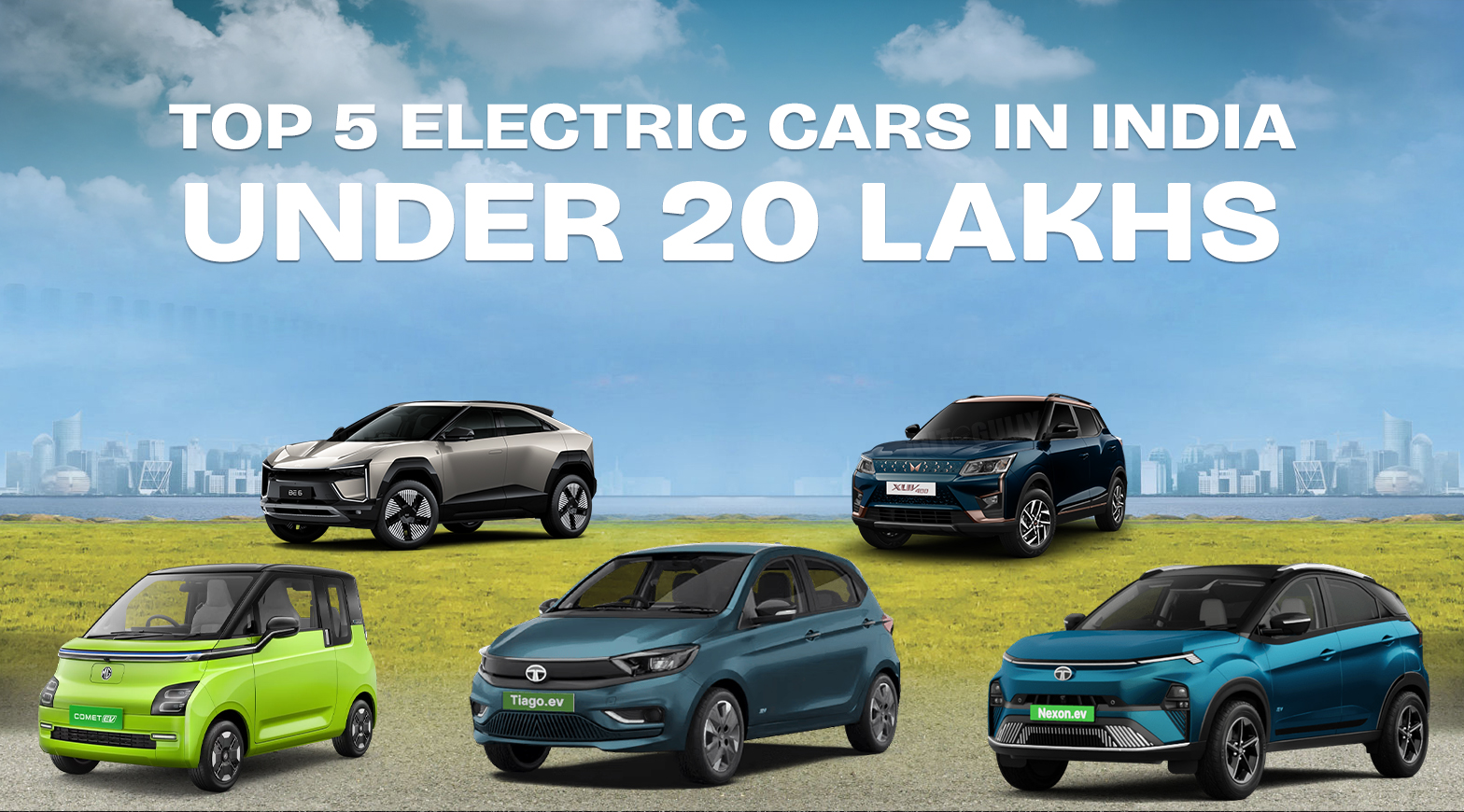Slowly, but EVs are becoming the first choice for Indian car buyers in recent years, with increasing consciousness about sustainable mobility. Many factors have led to this change, like the high fuel prices, improved technology, and tax benefits have made EVs more accessible than ever. But with so many new models competing for your attention, it can be difficult to choose the right one that best fits your budget and lifestyle.
The high demand required the right information, which is why in this article, we will take the best electric cars in India that come under the ₹20 lakhs, comparing their range, performance, features, and value for money. Switching from your petrol car to an electric one or buying your first car, this list will let you make an informed decision with confidence.
Finding the Top 5 Electric Cars in India
If you are ready to make the switch to electric, here are five models that deliver an ideal balance of affordability and range. Each car on this list brings something unique to the table, be it compact convenience, powerful performance, or premium design.
| Model | Price (₹ Lakhs) | Range (km) | Highlight |
| Tata Tiago EV | 8.69 – 12.04 | 250 – 315 | Great entry-level EV option |
| MG Comet EV | 7.98 – 9.98 | 230 – 250 | Compact and perfect for cities |
| Tata Nexon EV | 14.74 – 19.94 | 325 – 465 | India’s most popular electric SUV |
| Mahindra XUV400 | 15.99 – 19.39 | 375 – 456 | Strong performance with a solid range |
| Mahindra BE 6 | 18.90 – 28.54 | 557 – 683 | Bold design with premium appeal |
Top EV Cars Power Comparison
The power and acceleration are the most important factors; a car should be fun to drive, and we will compare the bases of speed and power
| Model | Torque (Nm) | Power (bhp) | Acceleration (0 to 100) |
| Tata Tiago EV | 110-114 Nm | 60-74 | ~14 sec |
| MG Comet EV | 110 Nm | 42 | 19.9 sec |
| Tata Nexon EV | 215 – 245 Nm | 142 | 8.9 sec |
| Mahindra XUV400 | 310 Mn | 150 | 8.3 sec |
| Mahindra BE 6 | 380 Nm | No data | 6.7 sec |
Ranking the Best Electric Cars by Safety Rating
As the number of road accidents increases, safety is one thing that Indian buyers are now looking into.
| Model | Safety Rating (NCAP) |
| Tata Tiago EV | 4 Star |
| MG Comet EV | Not Tested |
| Tata Nexon EV | 5 Star |
| Mahindra XUV400 | 5 Star |
| Mahindra BE 6 | 5 Star |
Top EV Charging Time Comparison
No matter how big the battery brand offers, they all will be exhausted in a long drive, so knowing the fast charging and EV charging price is vital.
| Model | Regular AC Charger | Fast AC Charger | DC Fast Charger |
| Tata Tiago EV | 6.9–8.7 hrs | 2.6–3.6 hrs | 58 min (10–80%) |
| MG Comet EV | 7 hrs | No data | No data |
| Tata Nexon EV | 6–7 hrs | 4.5 hrs | 56 min (0–80%) |
| Mahindra XUV400 | 6.5 hrs | — | 50 min (0–80%) |
| Mahindra BE 6 | 6–8.7 hrs | No data | No data |
Auto Gully Remarks
Your use case counts a lot when choosing the right EV. If space, safety, and comfort are what you are looking for as a family buyer, then the Tata Nexon EV or XUV400 can be the ideal option. Both the SUVs offer great performance, long range, and SUV practicality-perfect for those weekend trips or daily commuting with ease.
For the first time, buyers are looking for EVs, Tiago EV and MG Comet are the affordable electric cars in India. These are compact, reasonably priced, and extremely manageable in city traffic while holding costs low. Whereas the Tiago EV gives you a conventional hatchback feel with tech-laden interiors.
At last, for those who love a bit of style and luxury: the BE 6 is the one to watch. The Mahindra first time comes in EV with its bold but futuristic look, which could bring joy to your ride.
FAQs –
1. Should I go for an electric car right now?
Actually, this is a pretty good time to look into an EV. Cheaper models, government subsidies, and lower running costs mean EVs finally make sense for daily driving. If you do most of your driving within a city, then there are some affordable electric cars in India that you should look for.
2. How are electric cars performing in India?
EVs have come a long way in India. Brands like Tata, MG, and Mahindra are offering reliable models with a good range and stable performance.
3. What’s the current condition of EV charging infrastructure?
Charging stations are rapidly expanding across major cities and state highways. While Tier-1 cities like Delhi, Mumbai, and Bengaluru are well-covered, smaller towns are catching up fast. Home charging setups also make life easier for most users.
4. Are EVs expensive to maintain?
Not really. EVs have fewer moving parts than either a petrol or a diesel car, so the maintenance cost is lower. You mainly need to care for the tires, brakes, and health of the battery, oil changes, and lesser miles maintenance costs if you choose the best electric cars.
5. What about long drives or road trips in an EV?
Electric cars in India are becoming more convenient with every passing year. Many EVs now offer 300-450 km of range, and fast-charging stations are popping up along popular routes. With just a little planning, long trips in an EV are absolutely doable today.

